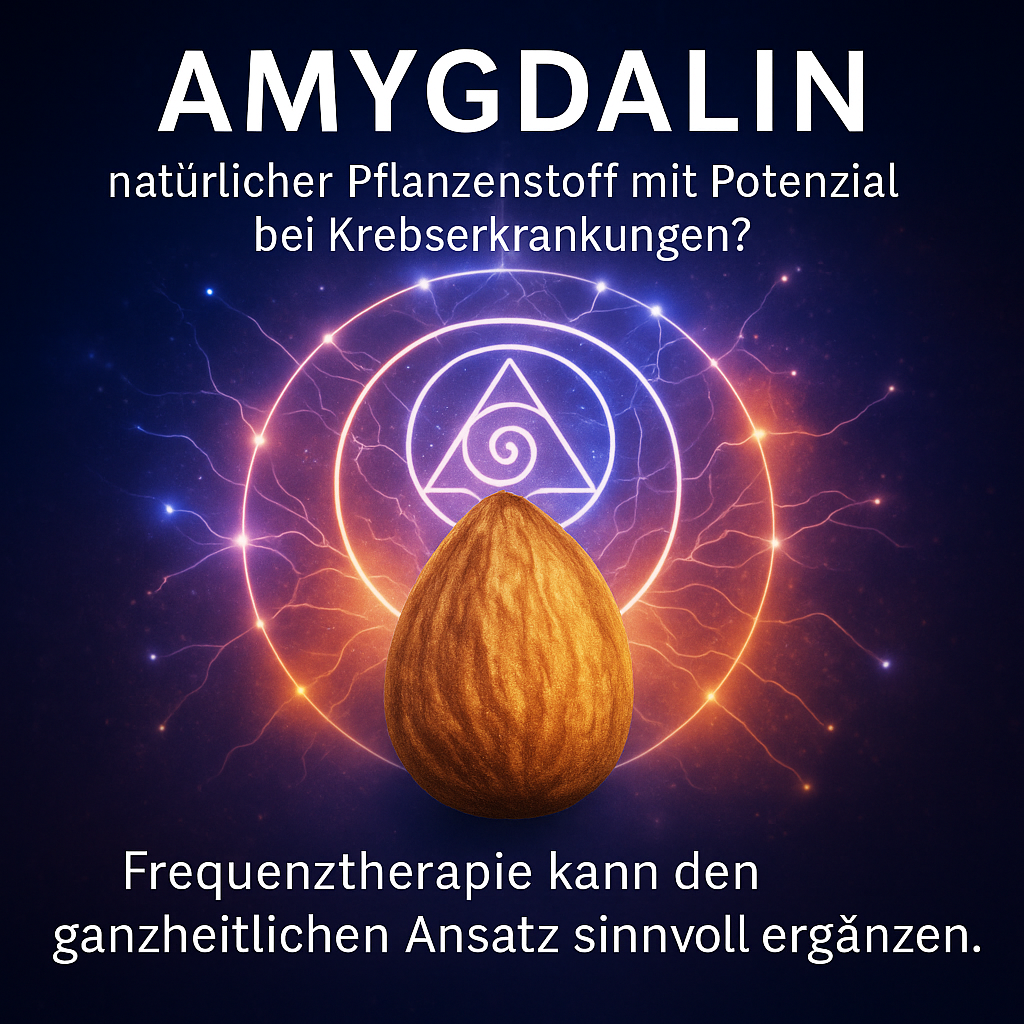
Amygdalin - hope from nature or controversial active ingredient?
Teaser: Amygdalin is being discussed as a natural agent in the fight against cancer - how frequency therapy can complement this approach.
What is amygdalin?
Amygdalin is a natural substance that is mainly found in bitter apricot kernels, but also in almonds, apple seeds, peach and cherry pits. Chemically speaking, amygdalin belongs to the so-called cyanogenic glycosides - plant substances that can release hydrocyanic acid under certain conditions.
In the human body, amygdalin is broken down into benzaldehyde, glucose and cyanide-like substances by the enzyme beta-glucosidase. The release of hydrocyanic acid is particularly critical here, as it has a toxic effect in high doses - but in low doses is also said to be targeted against degenerated cells.
Amygdalin and cancer - hope or risk?
Amygdalin, also known under the trade name Laetrile, became popular in the 1950s as an alternative cancer therapy. The theory behind it: Cancer cells contain higher concentrations of the enzyme beta-glucosidase, which means that amygdalin could specifically release hydrocyanic acid in these cells and destroy them - without damaging the surrounding healthy tissue.
However, to date there are no studies recognised by conventional medicine that clearly confirm the effectiveness of amygdalin against cancer. In fact, many health organisations warn of the potential risk of poisoning from cyanide, especially in the case of improper dosing or self-medication.
Frequency therapy as a complementary approach
In information medicine, we often see that complex clinical pictures such as cancer are not monocausal, but multifactorial. This is where frequency therapy comes in - it understands the human organism as an overall energetic system.
According to empirical medicine, the targeted application of electromagnetic frequencies, tailored to individual energetic imbalances, can help:
- regulate the metabolism,
- Supportdetoxification processes,
- modulate the immune system,
- and change the cellular environment in such a way that pathological structures are weakened.
In combination with natural substances such as amygdalin, this could result in synergetic effects - such as a more targeted effect on contaminated cell structures or improved detoxification following the release of hydrocyanic acid components.
Important: Frequency therapy is not a substitute for medically necessary oncological treatments, but can be used in a complementary way to improve quality of life and promote regeneration.
Practical experience
At NLS Informationsmedizin GmbH in Lilienfeld, we have observed the following with the accompanying use of frequency therapy
- increased vitality in oncological patients,
- better tolerance of conventional medical therapies (e.g. chemotherapy),
- and positive subjective feedback from patients who also use natural substances such as amygdalin.
We always work on an individualised basis - frequency patterns, intensities and therapy intervals are tailored to the individual patient.
Legal situation and safety of use
Amygdalin is not authorised as a medicine in many countries, including Austria and Germany. It may only be contained in certain food supplements in very low concentrations. It should therefore only be taken under expert supervision, especially in the case of oncological diseases.
Conclusion: Amygdalin in the context of integrative cancer therapy
Amygdalin remains a controversial but fascinating natural substance in the context of alternative cancer approaches. While conventional medical institutions warn of its toxic effects, many patients report subjective improvements. In combination with targeted frequency therapy, amygdalin can be a valuable component in an individualised therapy concept - provided that professional support and energetic fine-tuning is provided.
